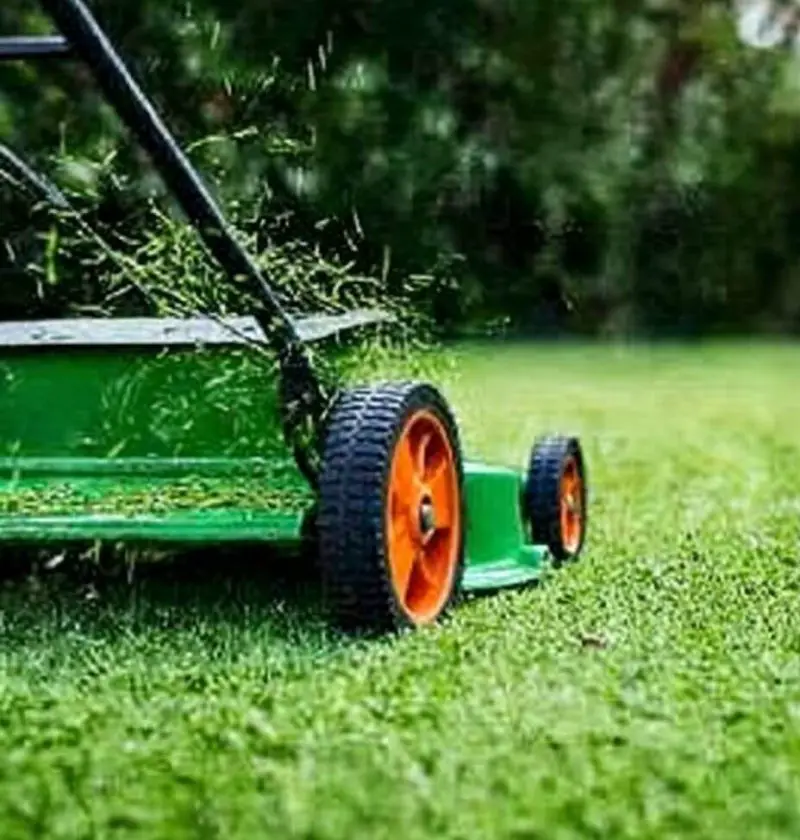You ever stand in the middle of your yard after mowing and think, “Well, that looks…meh”? You’re not alone. A lot of us chase that crisp, clean-cut look—like the kind you see on the 7th hole at a local golf course—but end up with frayed grass tips and patchy brown spots instead. And you know what? It’s probably not your mower. It’s your blades.
Now, I used to think mower maintenance was just changing the oil, checking the spark plug, and topping off the gas. You know, the usual suspects. But years ago, my grandpa pulled me aside and shared one of those “family tricks” you don’t find in the manual—an old-school, low-effort way to keep your blades razor sharp. And let me tell you… it changed everything.
Why Sharp Blades Are More Than Just a Detail
Let’s get one thing straight: sharp mower blades matter—a lot more than most folks realize.
Dull blades tear the grass. They don’t slice it cleanly. What you get are those dry, ragged edges that turn brown in a day or two. That not only messes with the look of your lawn but also invites pests and disease like an open-door policy. Sharp blades, on the other hand, give your grass a fresh haircut—clean, precise, and healthy-looking.
And listen, I’ve learned the hard way. I spent years thinking I needed a new mower. Turns out, I just needed to show my blades a little love.
Grandpa’s Trick: No Grinding, No Fuss
Now, my grandpa wasn’t one for fancy gadgets or expensive tools. He believed in what worked—and what didn’t take half the day.
This blade-sharpening trick is easy, cheap, and weirdly satisfying. It takes about 15 minutes, doesn’t require any power tools, and gives you results that make you want to stand back and admire your lawn like it’s a masterpiece. (Okay, maybe that’s just me. But still.)
Here’s what you’ll need:
-
A small strip of medium-grit sandpaper
-
WD-40 or similar lubricant
-
A socket wrench set
-
A wooden block
-
A pair of work gloves (trust me on this one)
Let’s Get Into It: The How-To
1. Tip the mower safely.
Lean the mower onto its side, but make sure the air filter and carburetor are facing up. That way, you won’t end up with a mess of spilled gas. (Been there.)
2. Remove the blade.
Grab your socket wrench and loosen the bolt. You might need to hold the blade still with a gloved hand or a block of wood wedged underneath.
3. Spray the sandpaper.
A light spritz of WD-40 adds just enough slip to help the sharpening along without damaging the metal.
4. Sharpen using the wooden block.
Lay the sandpaper flat on the block. Now, gently run the blade edge across it at the same angle as the existing bevel—almost like you’re smoothing butter on toast. A few steady strokes is all it takes.
5. Reattach the blade.
Once it’s got that nice, clean edge, bolt it back in place. Make sure it’s snug. You don’t want any wobble.
Save This Recipe
That’s it. Seriously.
Quick Timeout: Safety Matters
Look, I’m not trying to scare anyone, but blades are blades. Always disconnect the spark plug or power source before messing with them. Wear gloves. Go slow. Accidents happen when you’re rushing—or when you get cocky. Ask me how I know.
Why This Little Trick Works Wonders
Here’s the magic of this method: it saves time, it’s budget-friendly, and it works surprisingly well. No grinding wheels, no fancy jigs. Just a few household items and 15 minutes of your Saturday morning.
Plus, sharp blades mean:
-
Cleaner cuts (obviously)
-
Less stress on your mower’s engine
-
Reduced fuel use
-
A healthier, greener yard that neighbors might actually comment on
Honestly, my mower sounds better when the blades are sharp. Less rattling, more humming.
Other Methods (If You’re Feeling Fancy)
Sure, there are other ways to sharpen blades. Bench grinders, metal files, angle grinders, even those specialized sharpening kits. And hey, if you’ve got the gear and the know-how, go for it.
You can also pay for professional sharpening at your local hardware store or mower shop. Costs vary, but it’s usually $10–$20 per blade. Not bad, but also—why not try Grandpa’s trick first?
Mistakes to Watch Out For
Here’s what not to do:
-
Don’t over-sharpen. You’re not trying to shave with it.
-
Don’t forget to check the blade balance. Uneven sharpening causes vibration—and that’s no good for your mower (or your arms).
-
Don’t skip cleaning. Gunk and grass build-up leads to rust and wear.
Wrapping Up: Your Lawn Deserves Better
Look, you put in the time to mow your lawn—sometimes in the heat, sometimes after work, sometimes when you’d rather be on the porch with a glass of iced tea. Don’t let dull blades undo your effort.
Try this quick, no-nonsense sharpening trick. See the difference in your lawn. Maybe even pass it down to someone else one day. Because a lush, green yard? That’s more than just grass. It’s pride. It’s tradition. And sometimes, it starts with an old wooden block and a strip of sandpaper.

